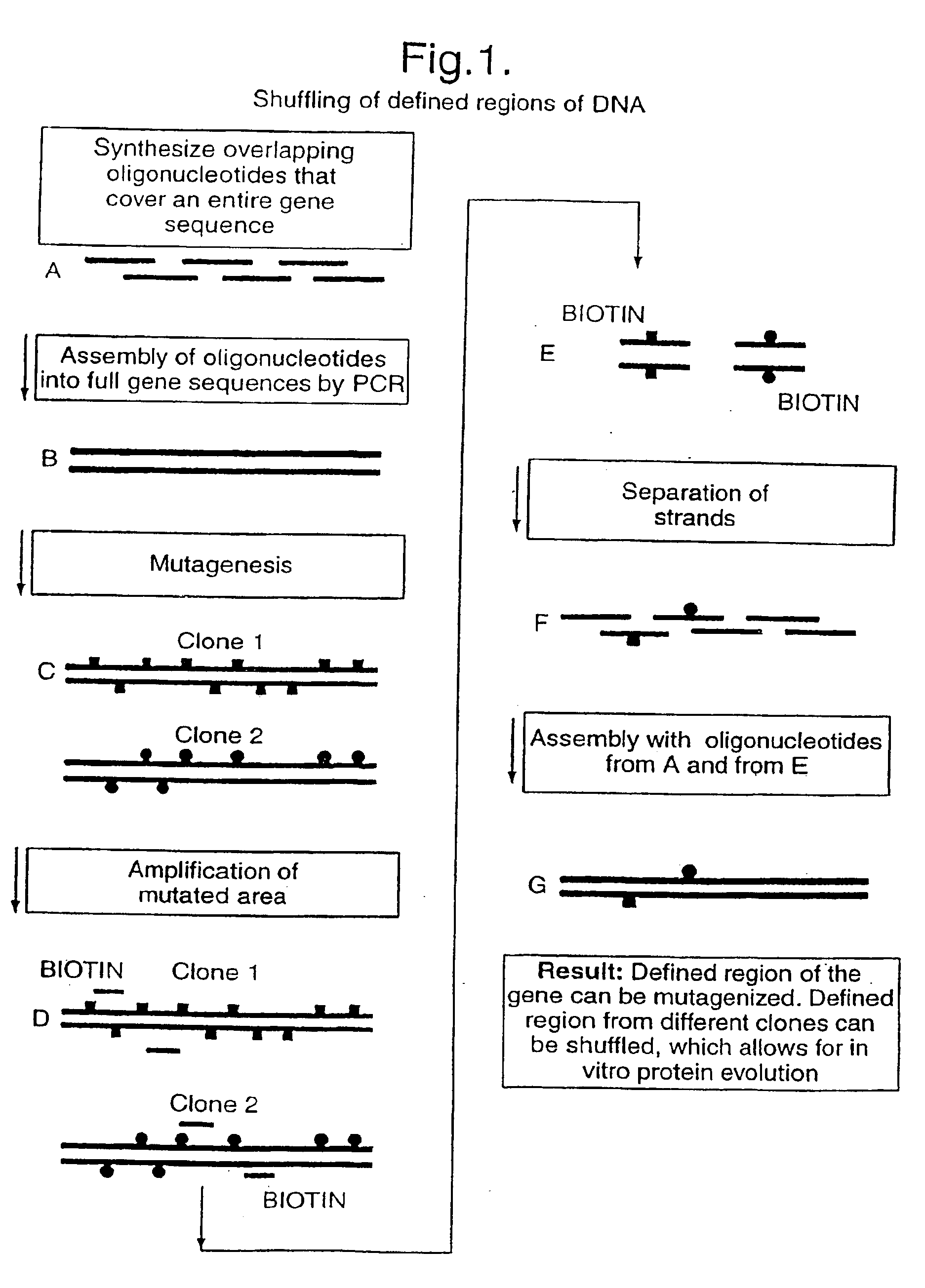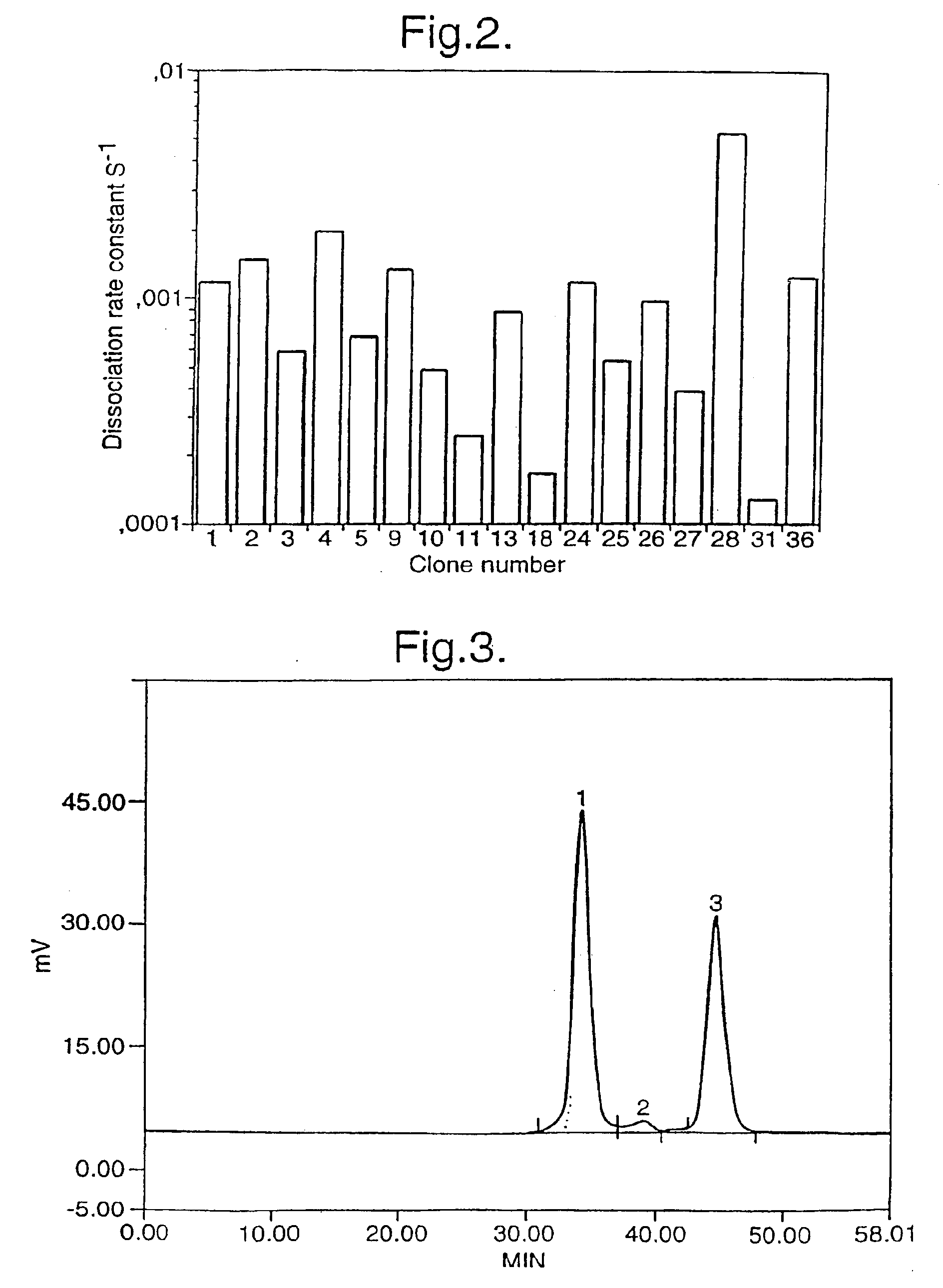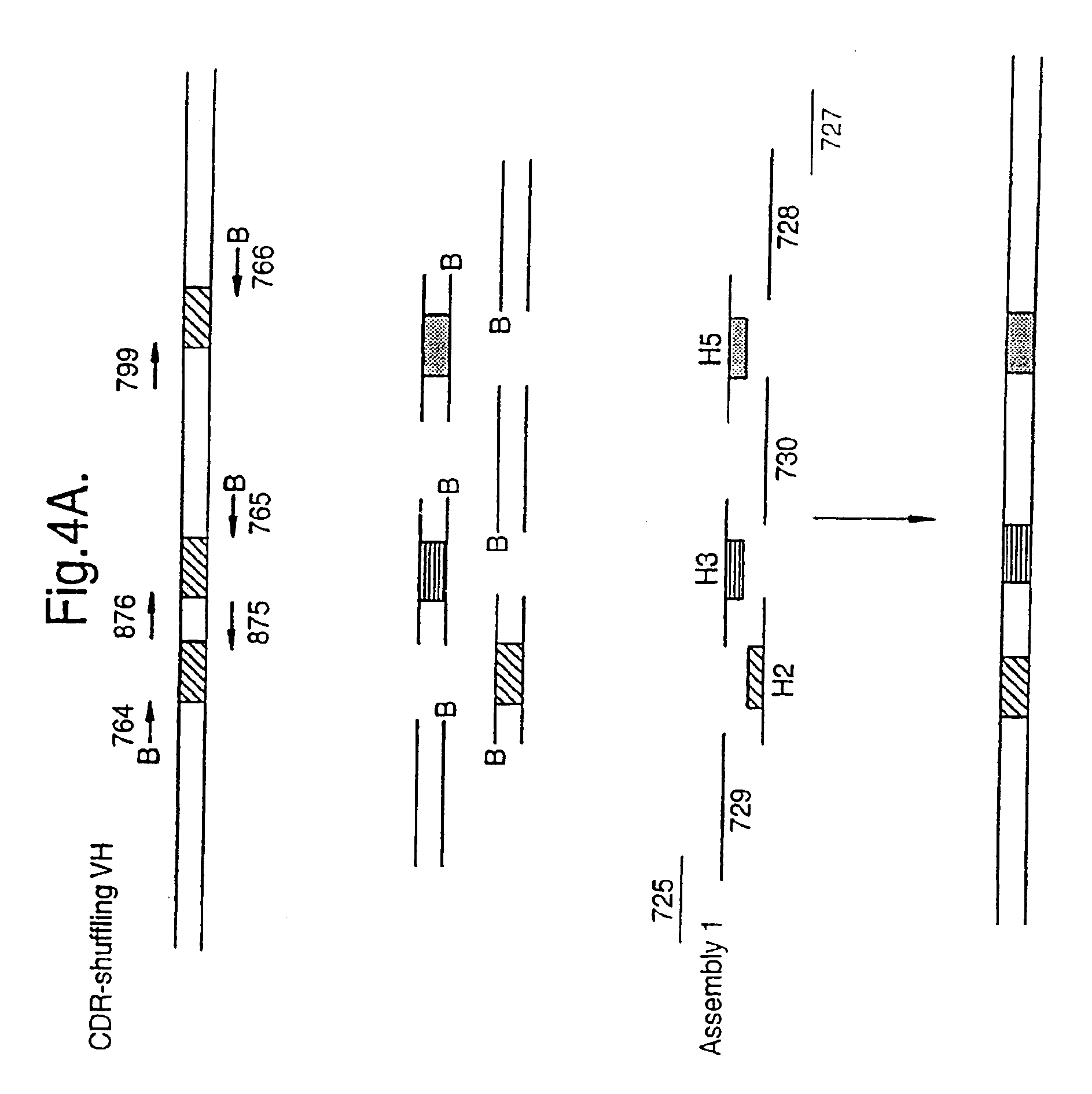Method for in vitro molecular evolution of protein function
a protein and function technology, applied in the field of in vitro molecular evolution of protein function, can solve the problems of inability to shuffling between clones, inability to include simultaneous strategies, and inability to produce non-functional genes, so as to increase the probability of selecting proteins and extend the variability
- Summary
- Abstract
- Description
- Claims
- Application Information
AI Technical Summary
Benefits of technology
Problems solved by technology
Method used
Image
Examples
examples
[0067]The present inventors have demonstrated the concept of shuffling of defined DNA in different experimental settings. Firstly, the shuffling of in vitro mutated CDR regions in an antibody fragment for affinity maturation purposes (example 1 and 2) is exemplified and secondly the shuffling of in vivo formed CDRs for creation of a highly variable antibody library (example 3 and 4) is exemplified.
[0068]A model system was developed, based on the scFv-B11 antibody fragment which binds to FITC. The full-length gene encoding this scFv was assembled from a set of 12 oligonucleotides (FIG. 4A and FIG. 4B) representing the known DNA sequence of the scFv-B11, and the functional binding of the gene product to FITC could be verified. This gene sequence was then mutagenised using error-prone PCR, and the DNA encoding the CDR regions were amplified as described above, using the amplification primers, one of which is biotinylated. (The CDR regions are the parts of the anti...
PUM
| Property | Measurement | Unit |
|---|---|---|
| dissociation-rates | aaaaa | aaaaa |
| volume | aaaaa | aaaaa |
| density | aaaaa | aaaaa |
Abstract
Description
Claims
Application Information
 Login to View More
Login to View More - R&D
- Intellectual Property
- Life Sciences
- Materials
- Tech Scout
- Unparalleled Data Quality
- Higher Quality Content
- 60% Fewer Hallucinations
Browse by: Latest US Patents, China's latest patents, Technical Efficacy Thesaurus, Application Domain, Technology Topic, Popular Technical Reports.
© 2025 PatSnap. All rights reserved.Legal|Privacy policy|Modern Slavery Act Transparency Statement|Sitemap|About US| Contact US: help@patsnap.com



